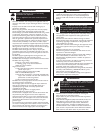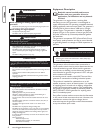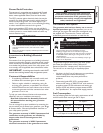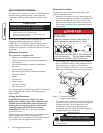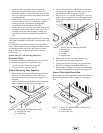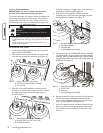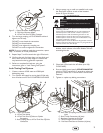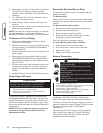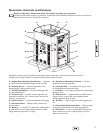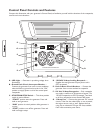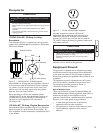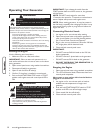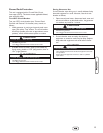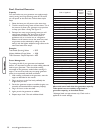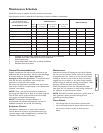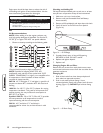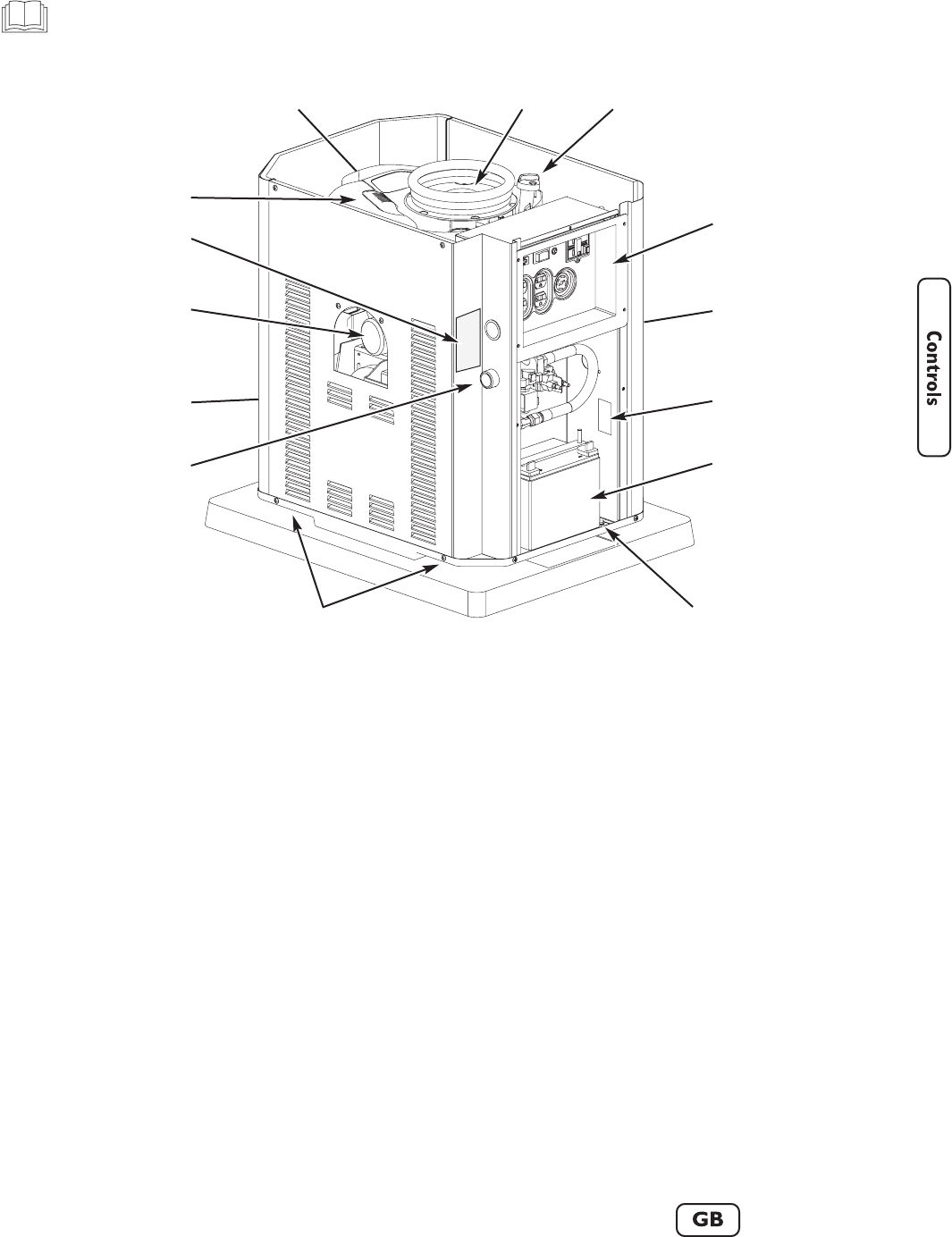
11
Generator Controls and Features
Read this Operator’s Manual and safety rules before operating your generator.
Compare the illustrations with your generator, to familiarize yourself with the locations of various controls and
adjustments. Save this manual for future reference.
Generator is shown with roof, oil filter access door, battery access door and control panel cover removed.
See Figures 5 through 8, earlier, for important LP fuel tank component views.
N
A
M
G
L
KH
CB
E
D
F
A - Engine Model Number Identification — (stamped
on top of valve cover) Identifies engine model and type.
B - Rotating Screen — Prevents large debris from
entering engine cooling airflow stream.
C - Oil Fill Cap/Dipstick — Check and fill engine with
recommended oil here.
D - Control Panel — Used for various operation and
maintenance functions. See “Control Panel Controls and
Features” on next page.
E - Oil Drain Hose — Provided to facilitate oil changing.
F - Unit Data Decal — Displays model, revision and
serial numbers.
G - Battery — 12 Volt DC, 33 Amp-Hour, sealed battery
provides power to start engine. Battery receives trickle
charge whenever generator is running.
H - Equipment Grounding Terminal — Connect
generator to earth ground here.
K - Lifting Pockets — Provided at each lower corner
for lifting generator and attached pad.
L - Fuel Inlet — Fuel supply components are attached to
generator here.
M - Exhaust Port — High-performance muffler lowers
engine noise to comply with most residential codes.
Includes approved spark arrester.
N - Oil Filter — Filters engine oil to prolong generator
life.
P - Hazard/Start/Stop Instructions — Observe these
warnings and procedures when operating generator.
R - Air Cleaner — Uses a dry type filter element and
foam precleaner to
protect engine by filtering dust and
debris out of intake air.
R
P



